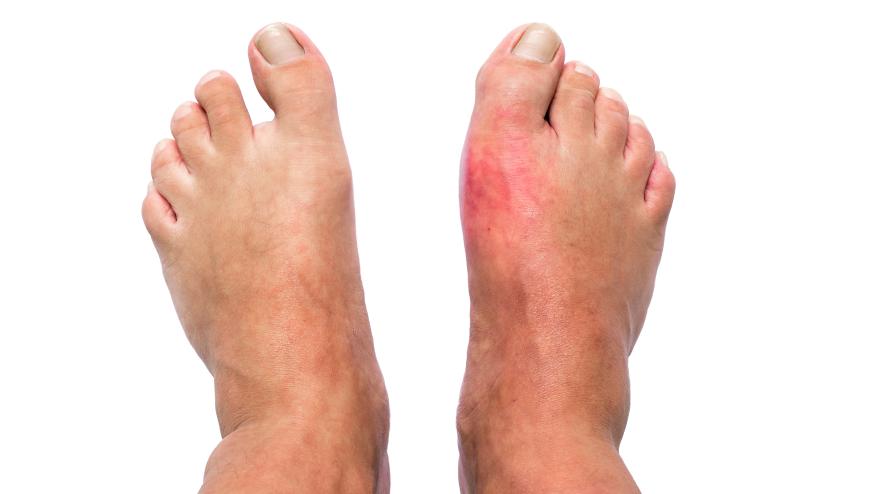Determinants of Gout Flares Save

Approximately 12 million US adults in the US have gout. Two recent literature reports highlight contributors to gout flares.
In JAMA, a retrospective review of 3613 gout patients with 3104 gout flares over 8.3 years showed an expected high rate of gout flares with higher baseline serum urate levels. Such that, 95% of gout flares occurred in people with serum uric acid (SUA) greater than or equal to 6 mg/dL.
Gout flare rates (by baseline SUA) per 1000 person-years were:
- 10.6 with SUA < 6 mg/dL (Flare rate over 10 yrs =1)
- 40.1 with SUA 6.0 to 6.9 mg/dL (Flare rate over 10 yrs =3.37)
- 82.0 with SUA levels of 7.0 to 7.9 mg/dL (Flare rate over 10 yrs=6.93)
- 101.3 for SUA levels of 8.0 to 8.9 mg/dL (Flare rate over 10 yrs=8.67)
- 125.3 for SUA 9.0 to 9.9 mg/dL (Flare rate over 10 yrs=10.81)
- 132.8 for SUA levels >10 mg/dL (Flare rate over 10 yrs=11.42),
Hospitalization rates (per 1000 person-years) were 34 fold and 45 fold higher for SUA 9-9.9 and SUA >10 mg/dl, respectively. Hence baseline serum urate level is useful at categorizing subsequent risk of recurrent gout over 10 year follow-up period.
Another report in Arthritis Care & Research found in a network metanalysis of urate lowering therapy (ULT) effects (29 publications; 27 trials) that no effect on gouty flares when initiating febuxostat (RR 1·08; 0·87-1·33), but increased flares with starting lesinurad (RR 2·65;1·58-4·45) (when compared to placebo+prophylaxis).
Compared to ULT alone, flares were significantly lower when rilonacept (160mg RR=0·35; 80mg RR=0·43; 0·31-0·60) or colchicine (RR=0·50; 0·35-0·72) was started with ULT.










If you are a health practitioner, you may Login/Register to comment.
Due to the nature of these comment forums, only health practitioners are allowed to comment at this time.